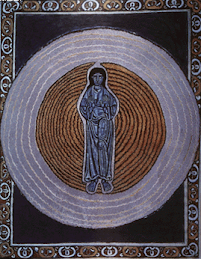John Polkinghorne is an English theoretical physicist, theologian, writer, and Anglican priest. For the fourth day of the Octave of Easter, here is something from his book, The God of Hope and the End of the World:
‘If anyone is in Christ, there is a new creation: everything g old has passed away; see everything has become new!’ (2 Corinthians 5:17). There is a clear resonance with the expectation found, found in the exilic prophets, of the acts of God who is not bound to the past, but who has future surprises in store. From the perspective of the New Testament, however, the reference is not solely to the future. The new creation is ‘in Christ’ and it is his resurrection that is the seed from which the new has already begun to grow.
The scope of the new creation is cosmic and it is not limited to human destiny alone. P. 84
. . .
Just as we see Jesus’ resurrection as the origin and guarantee of human hope, so we can also see it as the origin and guarantee of a universal hope. The significance of the empty tomb is that the Lord’s risen and glorified body is the transmuted form of his dead body. Thus matter itself participates in the resurrection transformation, enjoying thereby the foretaste of its own redemption from decay. The resurrection of Jesus is the seminal event from which the whole of God’s new creation has already begun to grow. P. 113
Previous: Bodily Resurrection: More than a Christian Curiosity
Next: Of First Importance
‘If anyone is in Christ, there is a new creation: everything g old has passed away; see everything has become new!’ (2 Corinthians 5:17). There is a clear resonance with the expectation found, found in the exilic prophets, of the acts of God who is not bound to the past, but who has future surprises in store. From the perspective of the New Testament, however, the reference is not solely to the future. The new creation is ‘in Christ’ and it is his resurrection that is the seed from which the new has already begun to grow.
The scope of the new creation is cosmic and it is not limited to human destiny alone. P. 84
. . .
Just as we see Jesus’ resurrection as the origin and guarantee of human hope, so we can also see it as the origin and guarantee of a universal hope. The significance of the empty tomb is that the Lord’s risen and glorified body is the transmuted form of his dead body. Thus matter itself participates in the resurrection transformation, enjoying thereby the foretaste of its own redemption from decay. The resurrection of Jesus is the seminal event from which the whole of God’s new creation has already begun to grow. P. 113
Previous: Bodily Resurrection: More than a Christian Curiosity
Next: Of First Importance





No comments:
Post a Comment